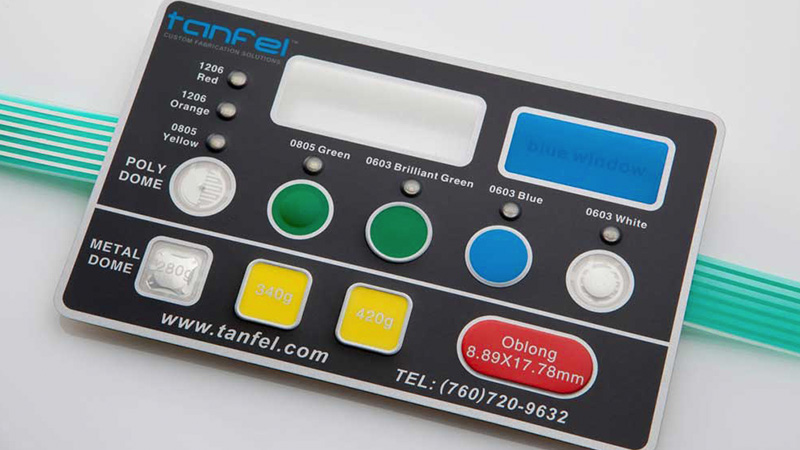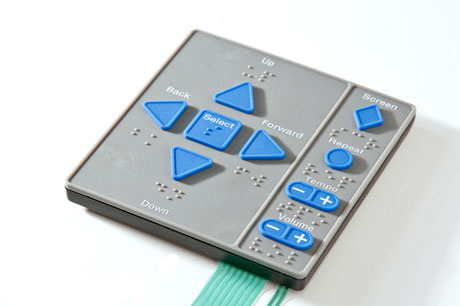Why Membrane Switches Are Preferred for Their Thin and Compact Styles
Why Membrane Switches Are Preferred for Their Thin and Compact Styles
Blog Article
Discover the Future of Control Interfaces: Why Membrane Layer Changes Are Acquiring Appeal
As markets increasingly focus on efficient and straightforward control user interfaces, membrane switches are arising as a compelling option that incorporates functionality with style versatility. Their durability and small nature make them especially fit for a range of applications, from healthcare to consumer electronics. With the increase of smart modern technology and sustainability problems, the technologies and capacities surrounding membrane layer changes warrant better examination. What specific benefits do they provide that could redefine our interactions with modern technology in the coming years?
Comprehending Membrane Layer Buttons
Membrane buttons are essential parts in modern-day digital tools, serving as user interfaces between individuals and makers. These switches include numerous layers, normally consisting of a graphic overlay, a spacer layer, and a circuit layer. When an individual presses a switch on the overlay, the top layer makes call with the circuit layer, completing a circuit and sending a signal to the gadget. This basic yet reliable mechanism permits for smooth interaction with technology.

Resilience is an additional vital function, as membrane layer switches can be made to withstand ecological variables such as wetness, dust, and chemicals. This resilience makes them perfect for applications in harsh problems. Generally, understanding the structure and feature of membrane layer buttons is critical for appreciating their role in the development of interface in today's technology-driven world.
Secret Benefits of Membrane Layer Switches
Providing an array of benefits, membrane buttons have come to be a recommended option in different applications (Membrane Switches). Among the main advantages is their small layout, making it possible for producers to enhance area in tools without jeopardizing capability. Membrane buttons are light-weight, which is specifically important in portable electronic gadgets

In addition, these buttons offer superb sturdiness. Created from versatile materials, they are resistant to dust, dampness, and a selection of ecological aspects, making them appropriate for rough problems. This durability often translates right into a longer life expectancy contrasted to standard mechanical buttons.
Moreover, membrane layer switches over allow for smooth integration of icons and graphics, supplying visual adaptability and improving user experience. Modification choices are comprehensive, enabling brand names to create distinct user interfaces that align with their item identity.
An additional trick benefit is their convenience of cleansing and upkeep. The level surface of membrane changes protects against the accumulation of dust and crud, making them excellent for hygienic environments. Membrane switches are economical, as they can be produced in high quantities at reduced expenses, making them available for a large variety of industries. These factors jointly add to their increasing appeal in modern control user interfaces.
Applications Throughout Industries

A myriad of sectors are progressively adopting membrane buttons as a result of their convenience and capability. These manage user interfaces are specifically common in the automotive industry, where they are used in dashboards and infomercial systems, offering a sleek and user-friendly user interface. In the clinical field, membrane layer switches promote the operation of diagnostic devices and client monitoring systems, making certain reliability and simplicity of use in critical scenarios.
Furthermore, the consumer electronics industry advantages from membrane layer switches in tools such as microwaves and remotes, enabling structured layout and improved sturdiness. Membrane Switches. The aerospace industry likewise makes use of membrane buttons in cabin controls, where area restrictions require effective and compact layout solutions
Additionally, the industrial sector uses membrane switches in machinery control panels, supplying resilience versus extreme atmospheres and ensuring functional effectiveness. Retail environments have welcomed membrane layer switches in point-of-sale systems, enhancing user communication while maintaining visual allure.
Style Patterns in Membrane Buttons
Developing along with technical improvements, style patterns in membrane layer buttons are progressively concentrated on boosting individual experience and visual allure. Modern membrane layer buttons are being developed for simpleness and user-friendly use, allowing customers to navigate interfaces easily. This change towards user-centric style highlights tactile comments, guaranteeing that customers receive instant confirmation of their activities.
Furthermore, personalized graphics and shades are becoming basic attributes in membrane button designs. This flexibility permits manufacturers to develop individualized user interfaces that align with branding and details user demands. The unification of backlighting is another noticeable pattern, as it not only enhances presence in low-light conditions yet likewise includes an aesthetically striking aspect to the total find more info design.
This change not only improves aesthetic appeals yet also contributes to the total capability and sturdiness of the buttons. These design patterns collectively highlight the growing significance of integrating type and function in the advancement of membrane layer buttons, eventually enhancing the customer experience.
Future Expectation for Control Interfaces
The future of control interfaces is positioned for considerable transformation as arising technologies proceed to improve user communications across various tools. The integration of innovative products, such as adaptable electronics and conductive inks, will certainly improve the versatility and functionality of membrane switches, making them significantly adaptable see to a series of applications. In addition, the surge of the Net of Points (IoT) will certainly drive need for more instinctive, easy to use interfaces that can seamlessly integrate with wise tools.
As expert system and device discovering advance, control interfaces will likely include even more tailored features, enabling users to connect with gadgets in methods that are tailored to their practices and preferences (Membrane Switches). This change towards user-centric layout will certainly position membrane layer switches as a principal on the market, particularly in sectors like health care, auto, and consumer electronic devices
Moreover, the promote sustainability will certainly urge manufacturers to explore environmentally friendly products and manufacturing approaches, making sure that the future of control interfaces straightens with environmental factors to consider. Overall, as modern technology proceeds to development, membrane layer buttons will become increasingly innovative, leading the means for cutting-edge control solutions that enhance user experience and operational efficiency across varied markets.
Conclusion
In conclusion, the raising fostering of membrane layer changes highlights their importance in the development of control user interfaces. As straightforward interfaces come to be vital in the context of IoT and AI advancements, membrane buttons see page are positioned to play a critical duty.
As sectors progressively prioritize easy to use and efficient control user interfaces, membrane switches are emerging as an engaging service that integrates functionality with design versatility.Toughness is another vital feature, as membrane buttons can be created to stand up to environmental factors such as moisture, dust, and chemicals.Developing alongside technological developments, design fads in membrane layer buttons are significantly concentrated on boosting user experience and visual appeal. Modern membrane layer switches are being designed for simplicity and instinctive usage, allowing customers to browse user interfaces easily. These design patterns collectively highlight the growing importance of incorporating form and function in the growth of membrane buttons, ultimately enhancing the user experience.
Report this page